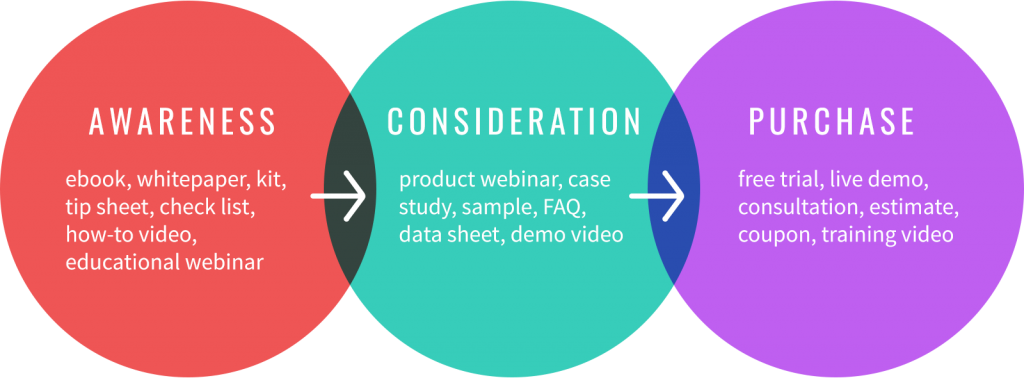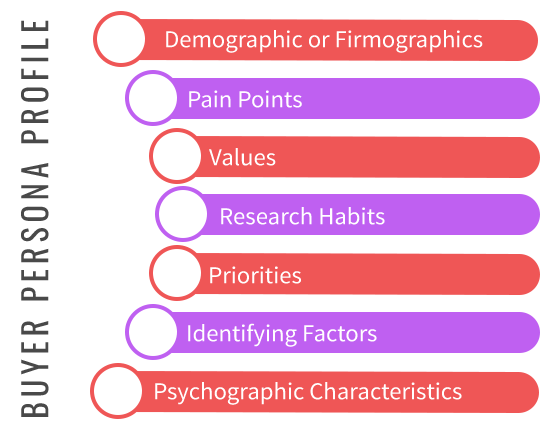I’ve got some good news and some bad news…
The bad news is that getting your website live was the easy part. InMotion Hosting makes sure of that! The hard part is still to come… now you need to develop content for your site that will attract, engage and convert visitors into prospects and ultimately customers.
The good news is that there is a tried and true framework for developing a content plan to ensure that your site can attract qualified visitors and will engage those most likely to become customers.
In this post I’ll share this framework to help you evaluate your business and customers, and develop a strategic content plan to help you meet the needs of your target market, and in turn your own business objectives.
4 Steps to Building a Successful Content Plan
The following steps walk you through a research oriented planning process designed to build a content plan based on the needs of your target market. Rather than the usual brochureware and marketing speak we are aiming here to develop content that answers questions and helps potential customers reach a decision to buy from you. By the time you’re through with this process, you will have created a content plan designed to attract and convert the most qualified visitors to your website.
Step 1: Define the Buying Cycle in Your Business
Your business’ buying cycle in the simplest sense is the journey your customers follow in order to buy a product or service. The customer journey will be different for different industries, longer or shorter depending on the nature of the product. Generally speaking however, a buying cycle follows this basic process…

The breakdown itself is simple enough to understand, the question here is what does the buying cycle in your business mean for content? Let’s take a look at the buying cycle from both a customer’s and content strategist’s perspective to tackle each stage head on.
- Awareness
- Customer Behavior: A potential customer becomes aware of a problem or a need in their life, something they want to overcome or fix. They may not know you can help yet, but they are about to start looking for solutions. They’ll start by asking around and searching online for answers.
- Your Content: What are the questions that a potential customer might start researching related to the problem they are experiencing, and what content could you develop that might help someone with such problems? By answering these questions you can start to position your content as a solution and you can also influence the potential customers buying criteria when they start comparing specific options.
- Consideration
- Customer Behavior: At this stage, the customer has decided that they require a product or service similar to your own to meet their needs. They set about evaluating alternatives and comparing providers to find the one that best meets their criteria.
- Your Content: Your sales content needs to address all the likely questions and objections a buyer might have. Think also about the types of keywords that customers would use when comparing products, and then what kind of content you could produce to address this intent, eg. ‘compare…’, ‘alternatives to…’, ‘…benefits’ and ‘…review’ and type terms. Comparison pages and product reviews are a great example that applies to almost all categories of product. Reviews and testimonials from happy customers means you can rank for such terms but also provides excellent social proof which is proven to boost sales.
- Purchase Decision
- Customer Behavior: The consumer has decided what type of product or service they want to address their need and they are ready to purchase.
- Your Content: Buying keywords like ‘…discounts’ or ‘cheap…’ might apply for certain categories of product, while other approaches such as product bundles and bonuses might work for others. Thinking about the typical consumer in your industry will help you figure out the most appropriate content to attract the buyer and convert sales.
With this buying cycle in mind, you need to think about the types of information that customers in your target market will be looking for at different stages of the buying cycle. Think also about the best mediums and channels to address these. For example, some industries (like DIY) generate loads of how-to type traffic and in this case video is probably a good option. The volume of ‘how to…’ queries on Youtube is huge and so it makes a great channel to reach potential buyers.
Step 2: Cover the Development of Personas
Developing buyer personas is another lens through which you can better understand your customers, and so deliver more value. In essence, what you’re trying to do here is define your target audience to help you determine what kind of content to create for them. Buffer has a wonderful guide on creating buyer personas to help you get started, and this is our own go to checklist for building simple, but insightful personas…

Some of the fundamental questions you’ll want to cover in the development of buyer personas are:
- What do they do? What’s important to them?
- What are their goals, values, and fears? Where do they congregate online?
- What problems do they have? What do they struggle with?
- What’s their go-to resource for solutions? What mediums and channels appeal to them?
Once you understand your target audience and what they expect from you, you can better create tailored content for them that will prove to be relevant to their needs and meet their expectations.
Step 3: Understanding the Keyword Market
Keyword research is an essential part of content strategy. With sound keyword research you can validate whether the market you’re targeting is viable or not, and more importantly gain insight into buyer intent and what your potential customers actually search for in relation to your products.
One of the best ways to do this is to use the Google Keyword Planner tool to uncover the most popular and relevant keyword terms. It takes some time, but you can start with some of the obvious terms and expand from there. One feature of the Keyword Planner that is often overlooked is the ability to enter a URL and let Google tell you what keywords it thinks are relevant for that page. You can use this feature on your competitor’s pages to see what terms they are targeting. Paid tools like SEMRush are also very useful for doing competitor keyword research.
Building on your assessment of the customer buying cycle you should frame your keyword research around the different stages of the cycle. This will help you uncover relevant research and consideration type terms which may be used at different stages of the buying cycle.
AnswerThePublic.com is another great resource for understanding the questions that people are asking Google about the product or service you’re selling. Enter your product terms and it will return all the how, what, why, where, who and when queries that real people are asking Google in relation to your product or service. This is one of my favorite tools because every one of these questions is a potential blog post.
Leveraging the information gained from keyword research and putting it to good use in producing content for each stage of the buying cycle can help you deliver optimal value to your viewership. Since you already know what they’re looking for, you’re in a position to tailor your site’s content in a way that guides them in making an informed purchasing decision.
Step 4: Mapping Content to Channels and Mediums
So far you’ve outlined your customer’s buying cycle, developed buyer personas for them, and conducted valuable keyword research to determine what your target market is querying in search engines. Now that you have priceless insight into who your target audience is and what they’re looking for, you can move on to building a content plan for your site where the goal is to deliver just the right content in the most appropriate format to engage your target market.
Start by mapping your content to appropriate mediums such as infographics, whitepapers, e-books, videos, presentations, webinars, or podcasts. Certain types of content will suit different mediums, but in many cases you can repurpose content across multiple different mediums. For example you might write a detailed blog post to accompany an infographic, or you might write a blog version of a video presentation or webinar that you have recorded. On the WordPress hosting page at WP Dev Shed we combine video with a text version of the content so visitors can choose how they want to consume the information.
Your choice of mediums will also inform the available channels, as will your insight into buyer personas, ie. you’ll want to choose those channels where you are most likely to find your target consumer. Of course, if you have developed content such as a video it can easily be repurposed across multiple channels like Facebook as well as Youtube in order to reach more people.
Identifying the medium where your strengths and your target market’s preferences overlap is the best bet. Depending upon your product or service, you can make an educated guess into what medium and which channel would deliver the best results. For instance, if you have an interior designing firm, your target audience is more likely to have a preference for videos and presentations as opposed to podcasts or long form articles. Or if you are in the DIY space (selling power tools for instance) then how-to videos on home DIY projects will be an excellent want to help your customers and show off your products.
Wrapping It Up
Quite honestly developing content for your website that truly resonates takes a lot of practice, and to start with involves as many misses as hits. But, you stand a much greater chance of getting the mix right if you focus on the buying journey and developing content to meet the particular needs of your target personas. You’ll quickly learn what works and what doesn’t resonate and can build on the successes.
We hope that by following the four steps outlined in this post, you’ll be able to create a clear, purpose-driven content plan for your website.
Did you face any problems with the steps outlined in this post? Do you think we missed a step? We’d love to hear from you so let us know by commenting below!
Thanks for the great tips! I do have a question however that I think you could probably answer.
I was wondering, What’s the different between the works of a web designer, a
web developer, a front-end developer and a back end
developer? Any insight would be greatly appreciated!